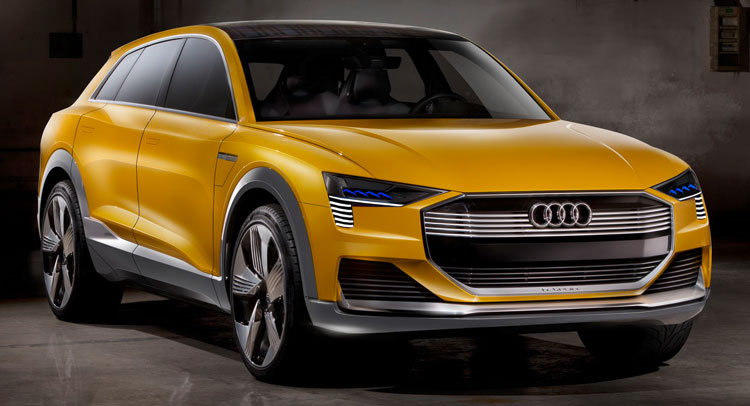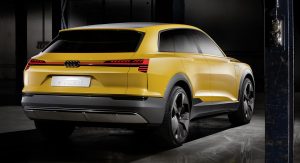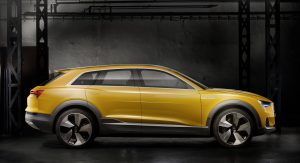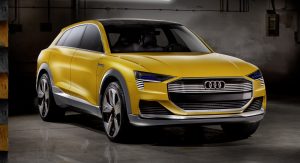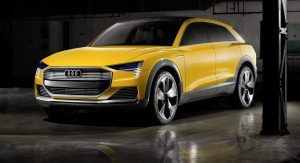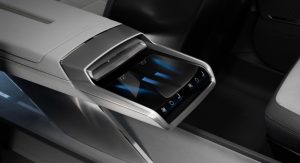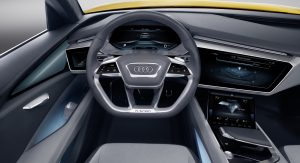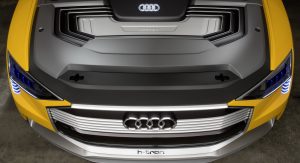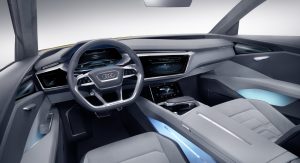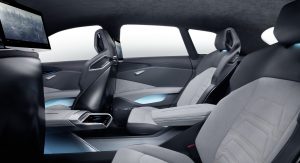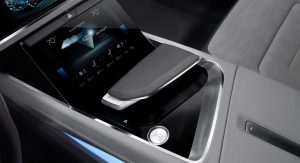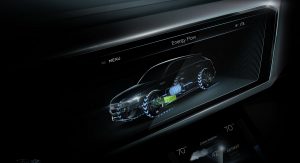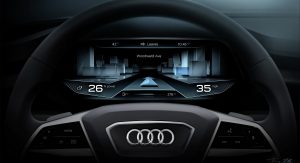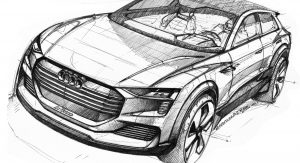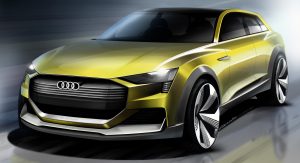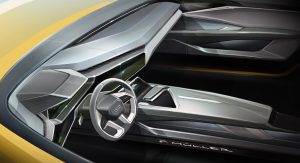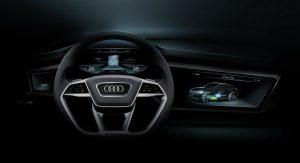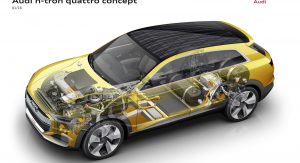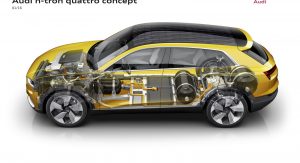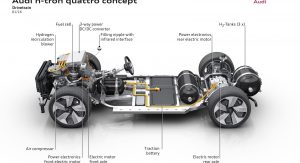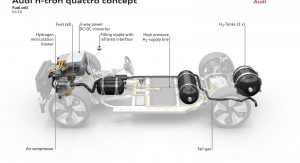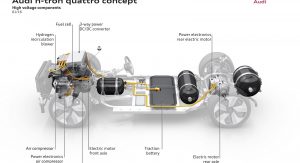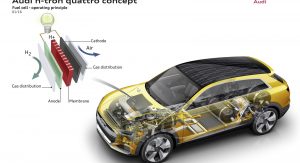Audi rolled out a fuel cell-powered iteration of their earlier e-tron crossover study called the h-tron Quattro at the Detroit Motor Show today.
Some minor revisions were made to the e-tron’s exterior, mainly on the front end that gets a reworked bumper and hood design, along with a fresh lick of paint that Audi names ‘Citrine Yellow’.
The study is based on the second-gen MLB Evo platform, used on the new Q7 and the Bentley Bentayga, measuring 4.88m (16.0ft) in length, 1.93m (6.3ft) in width and 1.54m (5.1ft) in height.
The concept takes power from two electric motors, mounted on each axle, with the front unit delivering 90kW (121hp) and the rear 140kW (188hp). The 0 to 100km/h (62mph) acceleration is made in under 7 seconds, thanks to the 406lb-ft+ (550Nm+) of combined peak torque, and top speed is electronically limited to 200km/h (124mph).
The battery is located underneath the floor, in the middle of the passenger compartment, it weighs less than 60kg (132.3lb) and can deliver, temporarily, up to 100kW of power to the electric motors. Refueling its tank with hydrogen takes approximately 4 minutes, providing a driving range of up to 600km (372.8miles).
Stopping power comes from gigantic ceramic brake discs that measure 20 inches in diameter at the front and 19 inches on the rear axle. The car also gets an adaptive air suspension, which can lower the body in two stages, by up to 30mm (1.2in) as speed increases, reducing drag, and can be operated by the driver via the Audi drive select system.
The cabin sports numerous OLED displays, from the infotainment system, to the touch-operated climate control system and even the dials. The steering wheel has a flat-bottomed design, the seats carry a new look and the rear bench was replaced by two independent seats, separated by a full-length armrest, which can keep occupants busy with the OLED-based mobile Rear Seat Entertainment.
Audi’s piloted driving technology makes its way onto the H-Tron Quattro and will eventually be seen on the next-gen A8 in 2017. It computes a model of the car’s surroundings in real time, using the radar, camera and surrounds sensors, and makes the info available to the assistance systems, to the piloted driving and to the parking systems. The latter is said to assume driving tasks during parking on stop-and-go traffic on freeways and works at speeds of up to 60 km/h (37.3mph).







